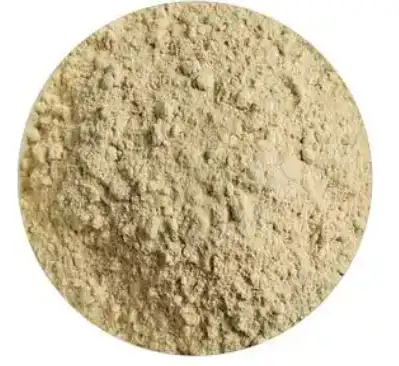Panax Notoginseng Root Extract Powder’s Saponin Content Analysis
Panax notoginseng, a renowned medicinal herb, has garnered significant attention in the world of natural health supplements. The root extract powder of this plant, particularly its saponin content, has become a subject of intense scientific scrutiny. In this comprehensive analysis, we'll delve into the saponin composition of Panax notoginseng root extract powder, explore different testing methods, and examine why certain saponins are considered crucial bioactive compounds.
How Much Saponin Does Panax Notoginseng Root Extract Powder Contain?
The saponin content in Panax notoginseng root extract powder can vary depending on several factors, including the plant's growing conditions, harvesting time, and extraction methods. However, research has shown that the total saponin content typically ranges from 5% to 17% of the dry weight.
The primary saponins found in Panax notoginseng include:
- Ginsenoside Rg1
- Ginsenoside Rb1
- Notoginsenoside R1
- Ginsenoside Re
- Ginsenoside Rd
Among these, Ginsenoside Rg1, Rb1, and Notoginsenoside R1 are often used as marker compounds for quality control purposes. The concentration of these specific saponins can vary, but they typically account for a significant portion of the total saponin content.
It's worth noting that the saponin profile of Panax notoginseng is distinct from other ginseng species, such as Panax ginseng (Korean ginseng) or Panax quinquefolius (American ginseng). This unique profile contributes to the specific health benefits associated with Panax notoginseng.


Panax Notoginseng Root Extract Powder: HPLC vs. UV Methods for Saponin Testing
Accurate quantification of saponins in Panax notoginseng root extract powder is crucial for quality control and standardization. Two commonly used methods for saponin analysis are High-Performance Liquid Chromatography (HPLC) and Ultraviolet (UV) spectrophotometry. Let's compare these methods:
HPLC Method
HPLC is a powerful analytical technique that separates, identifies, and quantifies individual components in a mixture. For saponin analysis in Panax notoginseng, HPLC offers several advantages:
- High specificity: HPLC can distinguish between different saponins, allowing for precise quantification of individual compounds.
- Sensitivity: It can detect saponins at very low concentrations.
- Reproducibility: HPLC provides consistent results across multiple analyses.
- Versatility: It can be coupled with various detectors for enhanced analysis.
The HPLC method typically involves extracting saponins from the powder, separating them on a chromatographic column, and detecting them using a suitable detector, such as a UV or mass spectrometer.
UV Spectrophotometry Method
UV spectrophotometry is a simpler and more cost-effective method for estimating total saponin content. This method is based on the principle that saponins absorb UV light at specific wavelengths. The UV method for saponin analysis in Panax notoginseng typically involves:
- Extracting saponins from the powder
- Reacting the extract with a color-forming reagent
- Measuring the absorbance of the resulting solution at a specific wavelength
While the UV method is quicker and requires less expensive equipment, it has some limitations:
- Lower specificity: It measures total saponin content but cannot distinguish between individual saponins.
- Potential interference: Other compounds in the extract may absorb at similar wavelengths, affecting accuracy.
- Limited sensitivity: It may not detect very low concentrations of saponins as effectively as HPLC.
Choosing the Right Method
The choice between HPLC and UV methods depends on the specific requirements of the analysis:
- For precise quantification of individual saponins, HPLC is the preferred method.
- For routine quality control where an estimate of total saponin content is sufficient, the UV method may be adequate.
- Many laboratories use a combination of both methods for comprehensive analysis.
Regardless of the method chosen, it's crucial to validate the analytical procedure and ensure its suitability for the specific Panax notoginseng root extract powder being tested.
Why Are Notoginsenosides the Key Bioactive Saponins in Panax Notoginseng?
Notoginsenosides are a unique class of saponins found predominantly in Panax notoginseng. These compounds have garnered significant attention due to their potent biological activities and potential therapeutic applications. Let's explore why notoginsenosides are considered the key bioactive saponins in Panax notoginseng root extract powder:
Unique Chemical Structure
Notoginsenosides possess a distinctive chemical structure that sets them apart from other ginseng saponins. This unique structure contributes to their specific biological activities and pharmacological effects.
Cardiovascular Benefits
Notoginsenosides, particularly Notoginsenoside R1, have demonstrated significant cardiovascular protective effects. Research has shown that they can:
- Improve blood circulation
- Reduce platelet aggregation
- Protect against ischemia-reperfusion injury
- Modulate blood pressure
These properties make notoginsenosides particularly valuable for supporting heart health and preventing cardiovascular diseases.
Neuroprotective Effects
Studies have revealed that notoginsenosides possess potent neuroprotective properties. They have been shown to:
- Reduce oxidative stress in brain cells
- Inhibit neuroinflammation
- Promote neurogenesis
- Improve cognitive function
These neuroprotective effects make notoginsenosides promising candidates for the prevention and treatment of neurodegenerative disorders.
Anti-inflammatory and Antioxidant Activities
Notoginsenosides exhibit strong anti-inflammatory and antioxidant properties. They can:
- Suppress pro-inflammatory cytokines
- Enhance antioxidant enzyme activities
- Scavenge free radicals
- Protect cells from oxidative damage
These activities contribute to the overall health-promoting effects of Panax notoginseng root extract powder.
Unique to Panax Notoginseng
Notoginsenosides are found almost exclusively in Panax notoginseng, making them valuable marker compounds for authenticating and standardizing Panax notoginseng products. This exclusivity also contributes to the unique health benefits associated with Panax notoginseng compared to other ginseng species.
products. This exclusivity also contributes to the unique health benefits associated with Panax notoginseng compared to other ginseng species.
Synergistic Effects
While notoginsenosides are crucial bioactive compounds, it's important to note that they work synergistically with other saponins and compounds present in Panax notoginseng. This synergy enhances the overall therapeutic potential of the herb.
The unique properties and diverse biological activities of notoginsenosides underscore their importance as key bioactive saponins in Panax notoginseng. Their presence and concentration are often used as quality indicators for Panax notoginseng root extract powder, reflecting the potency and efficacy of the product.
Conclusion
The saponin content analysis of Panax notoginseng root extract powder reveals a complex and potent mixture of bioactive compounds, with notoginsenosides playing a pivotal role. Understanding the saponin profile and utilizing appropriate analytical methods are crucial for ensuring the quality and efficacy of Panax notoginseng products.
As research continues to uncover the multifaceted benefits of these saponins, particularly notoginsenosides, the importance of standardized, high-quality Panax notoginseng root extract powder becomes increasingly apparent. Whether you're a health-conscious consumer or a professional in the nutraceutical industry, choosing a reputable source for your Panax notoginseng products is paramount.
At Angelbio, we are committed to providing top-quality Panax notoginseng extracts that meet the highest standards of purity and potency. Ready to experience the benefits of premium Panax notoginseng extracts? Contact our team of experts at angel@angelbiology.com to learn more about our products and how they can support your health and wellness goals. Let Angelbio be your partner in harnessing the power of nature for better health.
References
1. Wang, T., et al. (2019). Saponins from Panax notoginseng: Chemistry, cellular targets and therapeutic opportunities in cardiovascular diseases. Expert Opinion on Investigational Drugs, 28(2), 173-184.
2. Yang, X., et al. (2018). Panax notoginseng saponins attenuate atherosclerosis by regulating the lipid profile and inflammation. Clinical and Experimental Pharmacology and Physiology, 45(9), 943-951.
3. Mancuso, C., & Santangelo, R. (2017). Panax ginseng and Panax quinquefolius: From pharmacology to toxicology. Food and Chemical Toxicology, 107, 362-372.
4. Sun, H., et al. (2016). HPLC/Q-TOF-MS-based plasma metabolomics of Panax notoginseng saponins using rapid resolution liquid chromatography coupled with quadrupole time-of-flight mass spectrometry. Journal of Chromatography B, 1015, 104-113.


